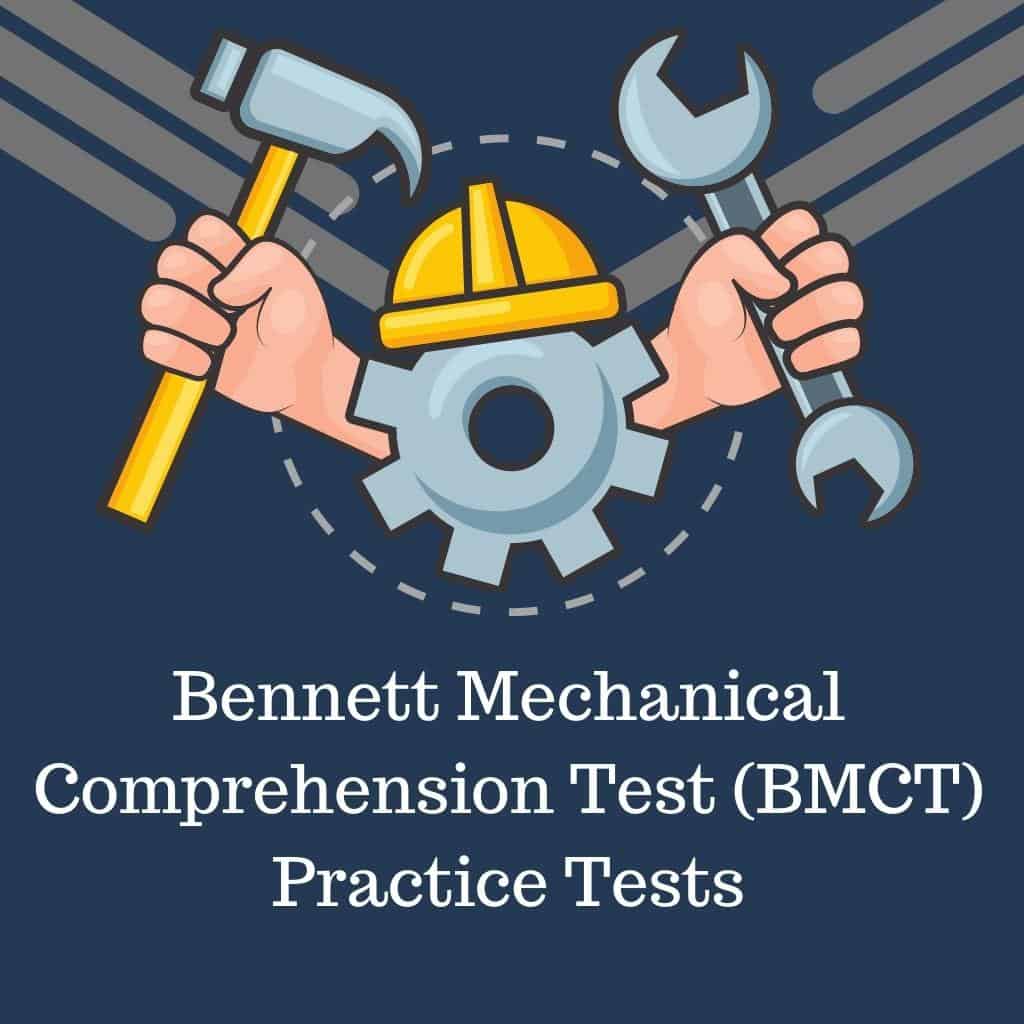The Wiesen Test of Mechanical Aptitude (WTMA) is a widely used pre-employment assessment designed to measure an individual's mechanical aptitude and understanding of basic mechanical principles. Developed by Dr. Joseph S. Wiesen, the test is commonly used by employers in industries such as manufacturing, automotive, transportation, utilities, and maintenance to evaluate job applicants' potential for success in positions that require mechanical skills and knowledge.
The WTMA consists of 60 multiple-choice questions and has a time limit of 30 minutes. The test measures a candidate's ability to comprehend and apply mechanical concepts related to physics principles, spatial visualization, simple machines, and tools.
The WTMA is crucial for various industries because it helps employers identify candidates with the mechanical aptitude needed to perform well in specific job roles. By evaluating a candidate's mechanical understanding, the test allows employers to make more informed hiring decisions and select individuals who are more likely to excel in their roles.
In industries where mechanical knowledge and skills are essential, such as manufacturing, automotive, and utilities, the WTMA is an invaluable tool for ensuring that new hires possess the requisite aptitude to perform their job duties safely and effectively. Additionally, the test can help reduce workplace accidents and improve overall productivity by identifying candidates who are better suited for mechanically-oriented positions.
Looking for prep material?
Find premium Wiesen Test Prep Material below!
Understanding the Wiesen Test of Mechanical Aptitude
What is the test format of the WTMA?
The Wiesen Test of Mechanical Aptitude (WTMA) is designed to assess your mechanical aptitude and understanding of fundamental mechanical principles. To adequately prepare for the test, it is crucial to understand its format, which includes the number of questions, time limit, and types of questions.
1. How many questions are on the Wiesen Test of Mechanical Aptitude?
The Wiesen Test of Mechanical Aptitude (WTMA) is comprised of 60 multiple-choice questions. These questions are designed to assess a candidate's understanding of basic mechanical principles and their ability to apply these concepts in various situations. The questions cover a range of topics, including mechanical reasoning, physics principles, spatial visualization, simple machines, and tools.
2. What is the time limit of the WTMA?
The WTMA has a strict time limit of 30 minutes. This time constraint is intended to evaluate not only a candidate's mechanical knowledge but also their ability to work under pressure and make quick decisions. Given the limited time frame, it is crucial for test-takers to manage their time effectively and answer questions as efficiently as possible. To succeed on the WTMA, candidates should practice answering questions quickly and accurately, while also developing strategies to handle the time pressure during the actual test.
3. What type of questions can be found on the WTMA?
The WTMA features multiple-choice questions that assess various aspects of an individual's mechanical aptitude. These questions typically fall into several categories, which include:
Mechanical reasoning: These questions test a candidate's ability to understand and apply mechanical principles to solve problems. Candidates may be asked to identify the correct operation of gears, pulleys, or levers, or to determine the outcome of a specific mechanical scenario.
Physics principles: Questions in this category evaluate a test-taker's understanding of basic physics concepts, such as force, motion, gravity, and friction. Candidates may be asked to determine the effects of these principles on objects or systems or to identify the relationship between different variables in a given scenario.
Spatial visualization: Spatial visualization questions measure a candidate's ability to mentally manipulate objects and visualize spatial relationships. Test-takers may be presented with diagrams or illustrations and asked to determine how objects would appear from different perspectives, or to identify how parts fit together within a larger system.
Simple machines and tools: These questions assess a candidate's knowledge of common simple machines and tools, such as levers, inclined planes, pulleys, and screws. Test-takers may be asked to identify the correct tool for a specific task, or to determine the mechanical advantage provided by a particular simple machine.
Scoring and interpretation
Understanding the scoring and interpretation of the Wiesen Test of Mechanical Aptitude (WTMA) is essential to help you evaluate your performance and gauge your preparedness for job roles in various industries. In this section, we will discuss raw scores, percentiles, and industry-specific score requirements.
Raw scores and percentiles
First, let's talk about how the WTMA is scored. Your raw score is simply the number of questions you answer correctly. Don't worry about getting penalized for wrong answers, so make sure to attempt every question. Your raw score is then converted into a percentile rank, which shows how well you performed compared to others in a representative sample group. For example, if you get a percentile rank of 75, it means you scored higher than 75% of the individuals in the comparison group. Keep in mind that employers often use percentile ranks to evaluate how well-suited you are for a specific job role.
Industry-specific score requirements
Now, it's essential to know that the WTMA score requirements might differ depending on the industry and the particular job you're applying for. Employers usually set their own minimum score requirements based on the level of mechanical aptitude needed for each position. For instance, a job that demands a high level of mechanical understanding, like a maintenance technician or engineer, might have a higher minimum score requirement than a position with less emphasis on mechanical skills.
To make sure you're well-prepared, research the specific score requirements for the job and industry you're interested in. This way, you can ensure that your WTMA performance meets or even exceeds these expectations.
How is the test broken down?
The Wiesen Test of Mechanical Aptitude (WTMA) assesses your understanding of various content areas related to mechanical comprehension. To succeed on the test, it is crucial to develop a strong foundation in each of these areas. In this section, we will delve into greater detail on the following content areas: mechanical reasoning, physics principles, electrical concepts, spatial visualization, and simple machines.
Mechanical reasoning
Mechanical reasoning questions assess your ability to understand and apply mechanical principles to various scenarios. You might be asked to figure out how gears, pulleys, or levers work, or predict the outcome of a specific mechanical situation. To excel in this area, try to learn about different mechanical systems and practice solving problems related to their operation.
Physics principles
In this part of the test, you'll be asked questions related to basic physics concepts, such as force, motion, gravity, and friction. You'll need to understand how these principles affect objects or systems, and recognize the relationships between different variables in given situations. Brush up on your basic physics knowledge, and practice applying these concepts to real-world scenarios.
Spatial visualization
Spatial visualization questions test your ability to mentally manipulate objects and visualize spatial relationships. You may be presented with diagrams or illustrations and asked to determine how objects would appear from different perspectives or how parts fit together within a larger system. To improve your spatial visualization skills, try working with 3D puzzles, building models, or using visualization exercises to mentally manipulate objects.
Simple machines
This section of the test evaluates your knowledge of common simple machines and tools, such as levers, inclined planes, pulleys, and screws. You might be asked to identify the right tool for a specific task, or determine the mechanical advantage provided by a particular simple machine. To prepare, familiarize yourself with various tools and simple machines, and understand how they function in different scenarios.
Remember, the key to mastering these content areas is consistent practice and a strong foundation in mechanical principles. As you study, try to find real-life examples of these concepts in action, and work on problems that challenge your understanding. Stay committed to your preparation, and you'll be well on your way to acing the WTMA!
Looking for prep material?
Find premium Wiesen Test Prep Material below!
How to Prepare for the WTMA
Assessing your current mechanical aptitude
Before diving into your WTMA preparation, it is essential to assess your current mechanical aptitude. This will help you identify your strengths and weaknesses, allowing you to tailor your study plan to address areas that need improvement. There are several methods you can use to gauge your mechanical aptitude, such as self-assessment questionnaires and reflecting on your previous experience with mechanical tasks.
Self-assessment questionnaires
Start by taking self-assessment questionnaires designed to evaluate your mechanical knowledge and skills. These questionnaires will give you a good idea of your current level of understanding and highlight areas where you might need improvement. Look for online resources or test prep books that include mechanical aptitude self-assessments, and complete them to gauge your strengths and weaknesses.
Previous experience with mechanical tasks
Another way to assess your mechanical aptitude is by reflecting on your past experiences with mechanical tasks. Think about any hobbies, jobs, or projects you've been involved in that required mechanical skills or knowledge. Did you find these tasks easy or challenging? Were you able to troubleshoot problems effectively? Your past experiences can provide valuable insights into your current level of mechanical aptitude.
By combining the insights from self-assessment questionnaires and your previous experience, you'll have a clear picture of your current mechanical aptitude. Use this information to tailor your study plan and focus on areas where you need the most improvement. Remember, practice makes perfect, so keep working on your weak areas, and don't hesitate to ask for help or seek additional resources if needed.
Creating a study plan
A well-structured study plan is crucial to effectively prepare for the Wiesen Test of Mechanical Aptitude (WTMA). By organizing your study efforts, you can maximize your understanding of the test content and develop the skills needed to succeed on the exam. Consider the following steps when creating your study plan:
Allocating time for each content area
Start by breaking down the WTMA content areas: mechanical reasoning, physics principles, spatial visualization, and simple machines and tools. Allocate time for each area based on your current strengths and weaknesses. If you're less confident in a specific area, dedicate more time to it. Make sure to set aside time for both learning new concepts and reviewing what you've already learned. Consistent practice is key, so try to study a little bit each day to reinforce your understanding.
Balancing study with other commitments
It's essential to find a balance between preparing for the WTMA and managing your other commitments, such as work, school, or personal responsibilities. To do this, create a study schedule that takes your daily routine into account. Identify blocks of time when you can focus on studying without distractions. You might need to get creative with your time management, such as studying during lunch breaks or waking up a bit earlier. Remember to also schedule time for relaxation and self-care, as this will help you stay focused and motivated during your study sessions.
Setting milestones and goals
Setting realistic milestones and goals is crucial for tracking your progress and staying motivated. Break down your overall goal of mastering the WTMA content areas into smaller, more manageable goals. For example, you might set a goal to complete a certain number of practice questions per week or to master a specific concept by a particular date. As you achieve each milestone, celebrate your progress and adjust your goals as needed.
By following these steps, you'll create a study plan that is tailored to your needs and ensures you cover all the necessary content areas. Remember to stay committed to your plan, seek help when needed, and maintain a positive attitude.
Looking for prep material?
Find premium Wiesen Test Prep Material below!
Conclusion
As we wrap up our discussion on preparing for the Wiesen Test of Mechanical Aptitude (WTMA), I want to emphasize some key points that will help you succeed.
Thorough preparation is crucial for achieving a high score on the WTMA. By dedicating time and effort to mastering the content areas and practicing regularly, you'll develop a strong foundation in mechanical aptitude. This will not only help you succeed on the test but also translate into valuable skills for your future career.
Sticking to your study plan is essential for maintaining progress and staying on track. Remember to allocate time for each content area, balance your study with other commitments, and set realistic milestones and goals. Your commitment to the study plan will play a significant role in your overall success on the WTMA.
Lastly, it's important to believe in yourself and your abilities. Confidence plays a crucial role in your performance on the test and your ability to handle mechanical tasks in real-life situations. As you prepare for the WTMA, acknowledge your progress and improvements, and trust in your skills and knowledge.
Stay committed to your preparation, be confident in your abilities, and keep pushing forward!
Looking for prep material?
Find premium Wiesen Test Prep Material below!



